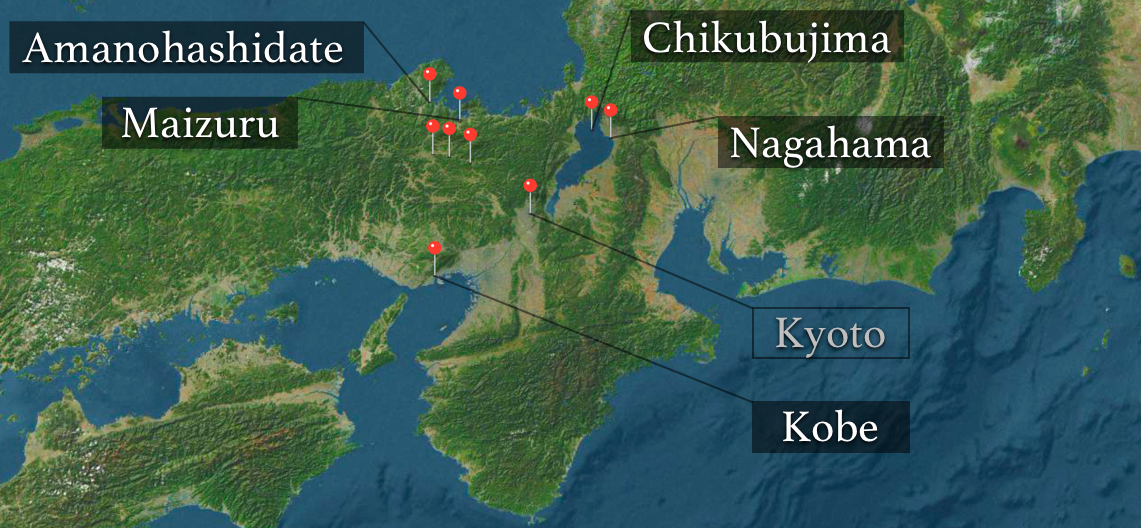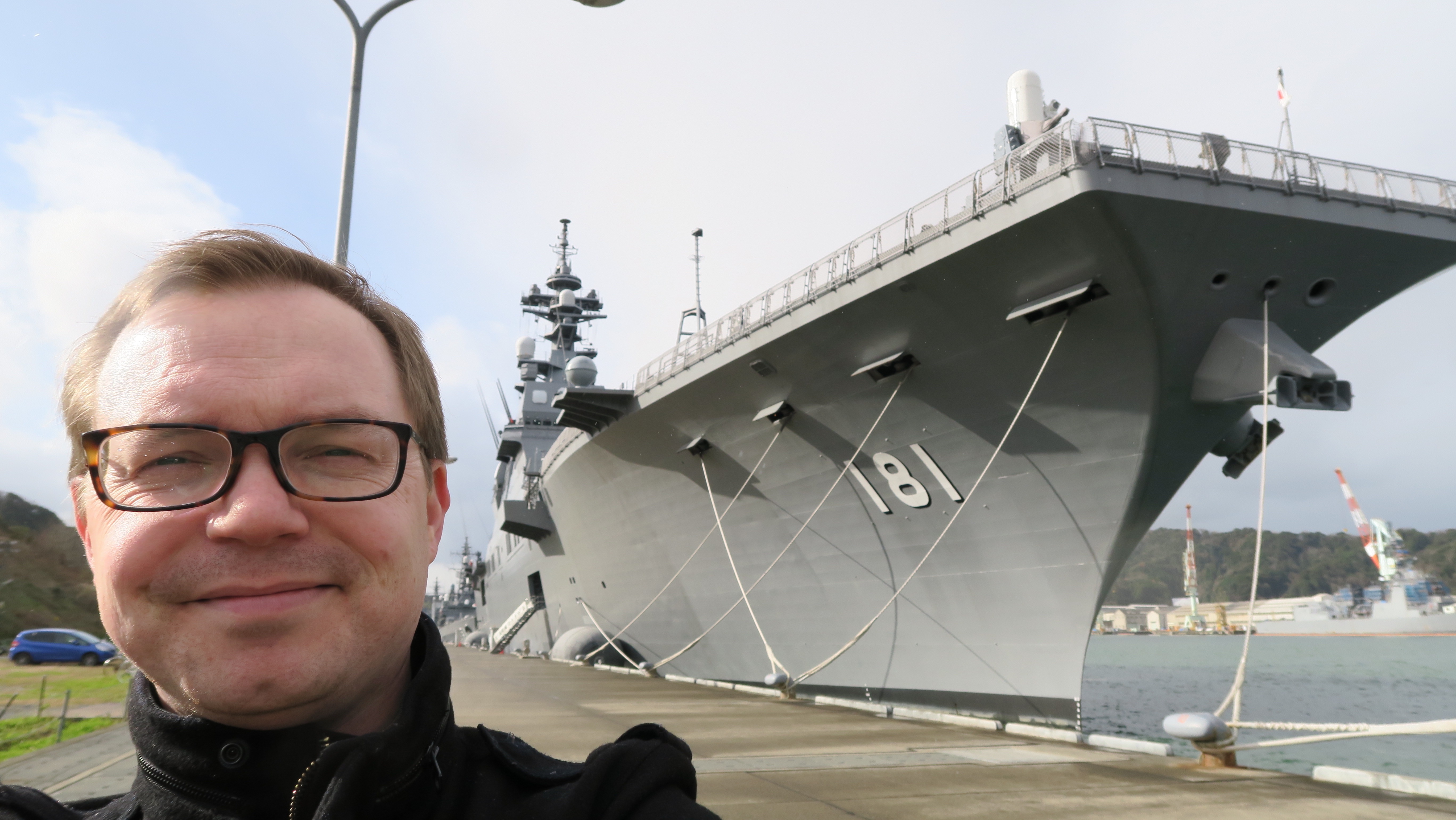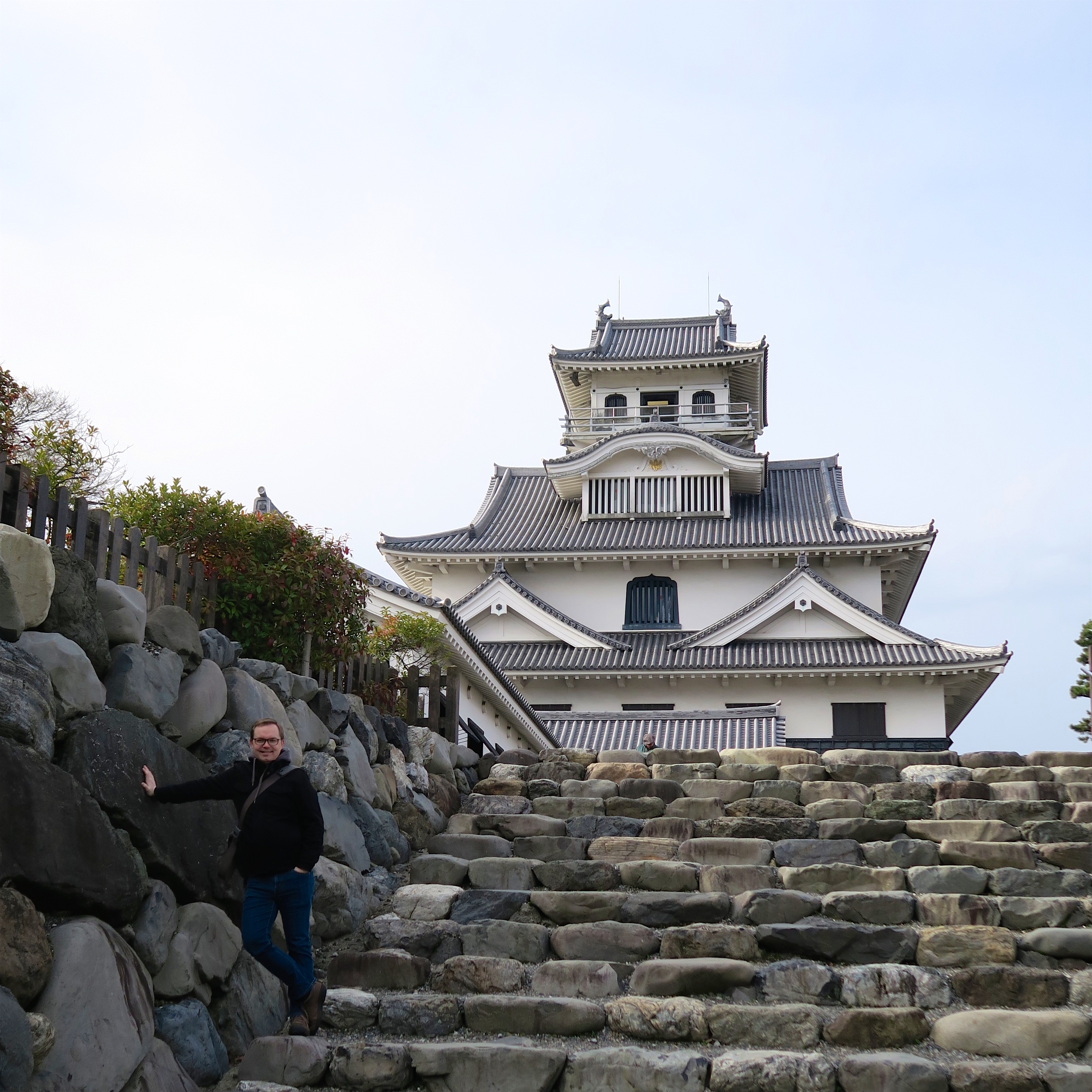On this trip to Japan, we resolved to visit some of the nearby regions to Kyoto on a couple of day trips. I took tons of photos on our travels, but there are a few highlights that I would like to touch on here.

Amanohashidate
This is one of three power spots in Japan, important areas in the Shinto religion. It is a natural bridge that looks like a rising dragon. There are many hot springs in the area, and the views are spectacular. The two hour train ride from Kyoto was nice as it passed through many tiny farming villages in the north of Kyoto prefecture that most people don’t think about when they think of “Kyoto.”

Maizuru
Another hour away on a “One Man Train” took us to Maizuru, a port town on the Sea of Japan. This is one of the historical gates to Russia, and you actually see Cyrillic here, kind of like how you see Korean letters everywhere when you are in Kyushu.

Maizuru is also a base for the Maritime Self Defence Forces. We were able to see the Hyuga, one of Japan’s 2 helicarriers, the closest thing to an aircraft carrier that they can get without conflicting with Article 9. I took a selfie with it!

Hikiage
Maizuru Bay was one of the quarantine areas for Japanese citizens who were returning from the Asian mainland after the Second World War. These were citizens that took to the frontiers of Manchuria to make their fortunes in the 20s and 30s, and were overwhelmed and taken prisoner by the Russians during WWII. They were sent to camps all across Siberia and as far as Moscow. About 6.6 million people were returned to Japan after the war — approximately 472,000 were survivors of the terrible Siberian prisoner camps, returned to their destroyed homeland. Dozens of ships brought them home to Maizuru Bay where they stayed in quarantine, were deloused, given food, and finally sent back to their home areas in Japan. It is a traumatic story which I have mixed feelings about since these citizens were sent abroad as imperial agents, to colonize and “civilize” Asia. However, the hardships they endured under the Russians, and the sense of relief and gratitude they must have felt when reunited with family back in Japan, makes this story compelling.




Learn more at the Maizuru Repatriation Memorial Museum →
Nagahama
Lake Biwa is a massive body of water in the center of Japan, surrounded by numerous resort spots. The northeast corner of it is an important strategic area where many historical battles were fought. Toyotomi Hideyoshi, the uniter of Japan, renamed the town of Imahama to Nagahama after the great general Oda Nobunaga. He built this castle which has an amazing view of the lake.

All Nagahama, Chikubujima and Kobe pics →
Chikubujima
From Nagahama we took a ferry to Chikubujima, a tiny island in Lake Biwa with a number of temples and shrines. It is a rocky little island with a ton of stairs. I was hyped to go since I am familiar with Chikubujima Ryu Bojutsu, a classical martial art focusing on the staff. It was nice to see the art commemorated on the island. Also, another cool thing was the restoration of one of the temples on the island. Most people think of Japanese Buddhist temples as these dark, austere wood structures. But historically that is not the case. At Hōgonji on Chikubujima, some of the original paint is still visible, and so they as they are restoring it they are re-painting it in the bright, vibrant colours of Buddhist temples of the past.
All Nagahama, Chikubujima and Kobe pics →
Kobe Center for Overseas Migration and Cultural Interaction
In the 20th century many Japanese emigrated to places like the US and Canada. After “head taxes” and other racist policies limited that migration, they headed to South America. Japan has a good relationship with many south American countries, building roads and the like, but especially with Brazil. Up to the 1970s Japanese families would board ships in Kobe bound for South America. The Kobe Center for Overseas Migration was the building where those families would come to be inoculated, learn Portuguese and Spanish, and spend their last few days before leaving from Kobe Port. They have a small library and a collection of many items from these families that went abroad. I took some quick snaps of the profiles for each South American country (other than Brazil) so you can get a sense of the Japanese population there.














